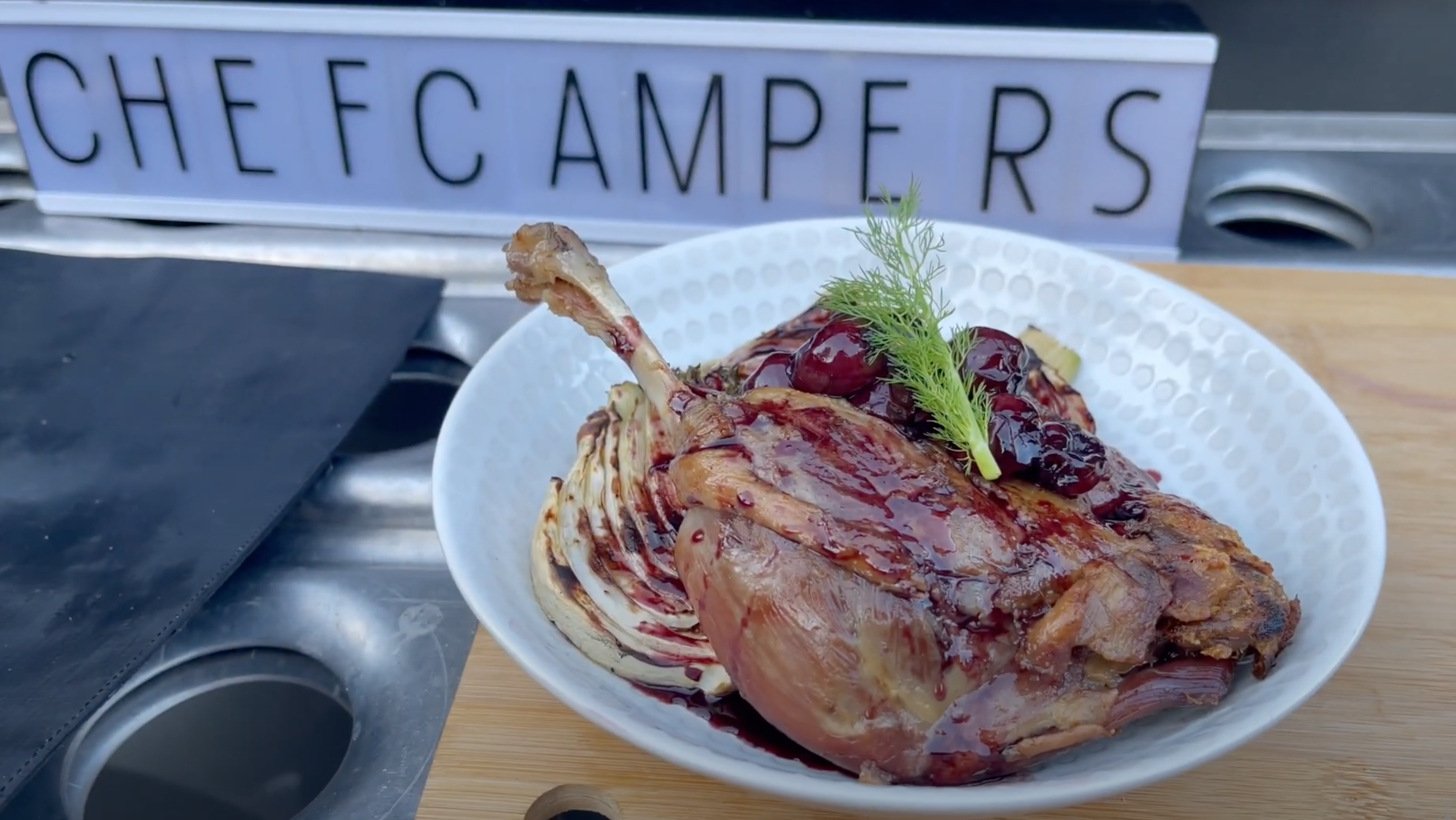Campervan Cooking Adventures - Seared Tuna

Campervan Cooking Adventures - Michael from @ChefCampers

Autumn in Morzine
The quiet before the snow
Autumn hits differently in the Alps. The summer mountain bike crowds are gone, the mountains go quiet, and for a few short weeks Morzine feels like it belongs to the locals again. It’s not ski season, and it’s not summer, it’s something in between. The French call it inter-saison, and it’s that brief pause where life slows down just long enough to breathe.

It’s at this time of year, I usually have to pack my campervan with winter gear and head to the French Alps for a full winter of Chef work. For the last few years, we have spent October to April, living in the van, working in the ski resort. The hours are incredibly long and exhausting when winter finally arrives. Before then, we prepare. We sharpen our chef knives, we make as much stock as we possibly can and lock down the menus, the suppliers and the final tweaks. It’s certainly, “the calm before the storm”.
Most people only ever see Morzine when it’s buried in snow. Chairlifts running, bars packed, ski boots clattering down every street. But strip all that away, and you’re left with a beautiful mountain town, with gorgeous views and a crowd of familiar faces. In autumn, you can smell the woodsmoke and it’s a reminder that the cold is on its way.
The colours this time of year are something else. The green pastures that hosted bikers and hikers all summer start to rust into deep golds and burnt orange. The larches turn first, their needles glowing like they’re lit from within, while the birch trees along the valley fade into soft yellow. Every morning the mist slides down from the peaks, curling through the trees like breath, and when the sun finally burns through, the whole valley lights up and at sunset, you see the glow on the ever changing snow line, that’s slowly creeping lower and lower towards the town.
Driving through the backroads around Morzine feels like time travel. You wind up through switchbacks that still smell faintly of summer resin and end up in silent ski villages. Lifts hanging still, shutters closed, not a sound but the crunch of gravel under the tyres. By winter, these slopes will be crawling with people, right now, they’re empty. This is the last chance to reach the wild camp spots before the snow claims them back.

It’s the kind of landscape that makes you want to pull over, step out, and just stop. You can feel the cold coming, that thin mountain air that bites a little deeper each day. It’s the perfect excuse to light a fire and for me, a fire is wasted if it doesn’t have food on it.
Autumn campfires are on par with spring campfires as my favourite time to have a campfire. The warmth is needed and the glow provides the perfect soft lighting for the dark skies. Summer campfires are too late in the evening to cook. Winter campfires run the risk of more snow or rain. Autumn and Spring are just right for me.
I also like to cook the way the season feels. At this time of the year, we are welcoming indulgent dishes. The ones we missed because we were too worried about fitting in our summer clothes. The future is jumpers, ski jackets and lot’s and lot’s of skiing and working. You can eat any number of calories and it would be hard to gain weight, although I have done it occasionally.
This dish is a bridge between summer and winter. It has the summer harvest of cherries preserved, either in the freezer, or in jars. Fennel loves being roasted, braised, or charred when the weather cools. Its sweetness deepens, and the anise note mellows. It’s one of those vegetables that feels autumnal, even though it starts in summer. At this time of year, you’ll still find fresh, firm bulbs, often the last before frost. Farmers in the valleys (around Thonon or Cluses, near Morzine) will still be selling them at this time, along with late leeks, squash, and root vegetables. The confit duck feels like winter insurance, a way of bottling up warmth before the snow arrives. It’s the kind of cooking that reminds you why patience tastes better than speed.

Confit duck began as a preservation method in rural Gascony, southwest France. Before refrigeration, farmers would salt and slow-cook duck legs in their own fat, then store them sealed under that same fat for the winter months. It was survival food, luxurious by accident and it kept for weeks or months through the cold season. You can confit your own, or purchase them from supermarkets or butchers. They are vac packed and covered in fat and duck stock jelly, save the jelly for the sauce!
Confit Duck, with Charred Fennel and a winter warming cherry sauce
Ingredients (serves 2 hungry people)
2 Confit Duck (you can buy pre prepared from the fridges in supermarkets)
1 Fennel - Sliced into chunky slices
1 Lemon
1 Drizzle of Olive Oil
For the sauce
1 Mug Cherries, frozen or from a jar.
1 Mug of Red Wine or Port
4 Cloves
2 Star anise
1 Cinnamon stick
20g Sugar or Balsamic Vingar
Duck Stock Jelly from the confit duck pack
Method
1. Light Your Campfire
Light your campfire and let the flames die down.
2. Make the Sauce
Add all of the ingredients for the sauce into a pan and place over a gentle heat on the campfire.
Cook until it has reduced 50%

3. Confit Duck
Gently warm the duck legs over an indirect heat, the fat will cause it to flare up, so consider a dish or be careful when handling the duck.
4. Char the fennel
Drizzle Olive oil over the fennel and a squeeze of lemon
Char the fennel over a direct flame until soft

5. Plate up
Place the charred fennel on the plate
Rest the duck on top
Drizzle over the cherry sauce
Garnish with fennel leafs
Enjoy!








